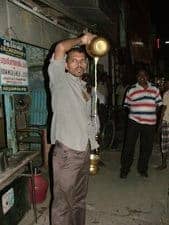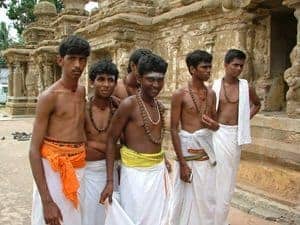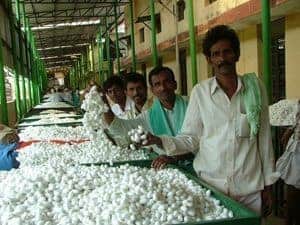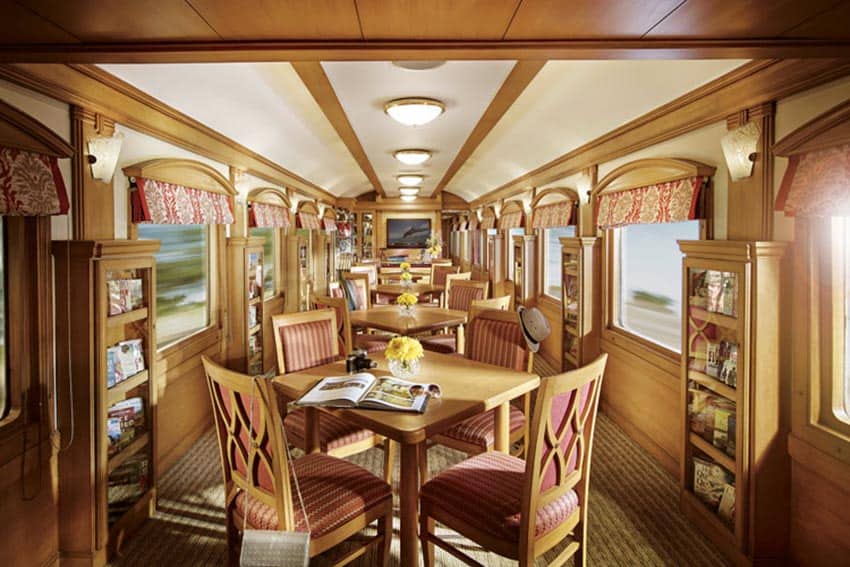
South India from East to West
By Linda Walten
This is India. India is a living, breathing masala, mixtures of languages and religions, a leader in technology holding onto old-world

customs. Women still hang small tokens representing children on a tree hoping for pregnancy sooner rather than later. This is India today.
I got to the Chennai airport late night, heat and humidity oppressive except for an infrequent breeze. The taxi went through deserted city streets. The driver pulled onto a dark side road then into what I thought was an alley then lights of the Park Hotel appeared.
The driver asked for more than three times what he had quoted at the airport which was US $6.00. I was grateful to be at my destination but felt the need to barter just on principle. We met at US $15.00. I drug my sweaty self into the lobby.
I would have one day to rest and clean up before meeting fellow travelers. We were going from Chennai to Mahabalipuram, Kanchipuram, Pondicherry, Tanjore, Madurai, Thekkady in the mountains of Kerala, Cochin and the Alleppey Backwaters, explore Mysore then fly out of Bangalore.
My first morning in Chennai found me on the back of a motorbike wending through heavy traffic to get to an ATM machine. At times I lowered my gaze to avoid seeing what I knew were impending collisions.
It was exhilarating, better than a roller coaster. In the hotel restaurant I saw waiters waving their heads side to side. I misinterpreted it as a rude, “so what?” or some genetic neurological affliction. Thankfully I was informed that it meant “okay, I understand”.
South India
After meeting my fellow travelers we went south to Mahabalipuram and stayed at the Grt Temple Bay which is a Radisson Resort on the Bay of Bengal. The humidity rose to 98%, breezes were not cool. On one of my walks I met three Australian women. They had been to North India so I asked them how it compared. They told me they preferred South India. That confirmed for me that I had made the right decision.


Close to Mahabalipuram is the world’s largest bas relief carved in stone against a hillside, The Descent of the Ganga. It is a UNESCO World Heritage Site and depicts Hindu mythology telling stories for centuries to people unable to read the written word.
Inland is Kanchipuram, “The City of 1,000 Temples” also known as “The Silk City”.
I saw my first gopuram at the Ekambareswarar Temple, the tall pyramid shaped, intricately carved and multi-colored structures.
Before seeing India’s temples I thought once I had seen one why would I want to see more? Not so. Each is different in its own way. “Living” temples, those currently used as places of worship, require the removal of shoes and women’s leg wear below the knees. Socks help to protect feet from hot pavement.
French Inspired South India
Further south, on the coast, is Pondicherry, a university town. The French were there from 1673 until 1962. Architecture, city parks, boulevards and street signs reflect their time in South India. We walked the beach on the eve of Mahatma Gandhi’s birthday. His statue was decorated for the occasion.
A family wanted their photograph taken. Indians are eager to be photographed alone, with families or travelers with no expectation of ever seeing a copy.
The silence within the walls of the Aurobindo Ashram was a stark contrast to the busy-ness on the street. It was a spiritual respite.
The Brihadisvara Temple, at Tanjore, 508 km southwest of Pondicherry, is another UNESCO World Heritage Site. Hindu temples outnumber Catholic and Protestant churches, Jewish synagogues and Muslim mosques. Hindus make up over 80% of the
population.

Adventurous Eating
In Madurai, 324 km southwest of Tanjore we ate at a street café and at sidewalk vendors. I was skeptical but by the time we got there the adventure was calling. A good South Indian meal then warm milk, water buffalo ice cream and spices wrapped in Betel Nut leaves for dessert. The heat of the streets and the crowds added to the ambiance.
I was sweating for more reasons than the heat while waiting for an hour to pass when I knew I was safe from intestinal revolt. Madurai is built around the awesome Meenakshi-Sundareswarar Temple.
Non-Hindus aren’t allowed in the main sanctuary where statues of Shiva and Parvati set.
To the Arabian Sea
From Madurai we headed west into the mountains of Kerala. Plantations of spices, coffee, tea, rubber, palm and grapes cover the landscape. Field workers plant rice, pick cotton, dry grain by the sun and plow fields with oxen as it has been done for centuries.
Thekkady is a tourist town with boutique shops, restaurants and hotels. Exploring the streets is fun even in hard mountainous rains. Large fruit bats soar through the evening skies. Monkeys come into the trees from surrounding hills. Sounds are extraordinary with monkey hoots and bird songs. Hotel check-in instructions include keeping your room door locked at all times because monkeys know how to get in.

Periyar Wildlife Sanctuary, National Park and Tiger Reserve is the reason to be there. Elephants, wild boars, leopards, wild dogs, monkeys, exotic birds and giant squirrels make unscheduled appearances.
The closest I came to seeing any animal was wild dog scat but the park ranger gave it his best effort. Getting to the nature walk required crossing a body of water on a small raft of bamboo poles, while standing.
The Arabian Sea
The thrill of getting to the western shore of South India are the Alleppey Backwaters. Being on the water in a houseboat (kettuvellam), relaxing in a lawn chair beside the pilot, feeling the breeze off the water, watching the palms and ferns sway in the wind was heaven. Having a good meal onboard then boating through the waterways gave me a memory of South India I had not anticipated.
Snake boats are appropriately named. They hold up to 100 oarsmen. Races are held in August, September and during festivals. As luck would have it I saw a boat just after a race. The oarsmen held their trophy high over their heads.
Cochin is an old city on the Arabian Sea, now large and industrialized. The bay is busy with freighters and fishing boats. Walking along Fort Kochi Beach large Chinese fishing nets line the beach. It’s intriguing to watch them lowered into the water then raised with a catch.

Palaces of South India
Bangalore has the Tipu Palace, Madurai has the Thirumalai Naicker Mahal and Kochi the Mattancherry Palace but Mysore holds the prize for palaces. Both the Maharaja’s Palace and the Lalitha Mahal Palace are impressive visions of times long ago.
Tiled floors, stained glass, domed ceilings, intricate carvings, vast halls with pillars too numerous to count took me back to that time. A painted mural encircles one room. It depicts a huge parade of Indian soldiers in uniforms of various styles and colors, decorated elephants and horses.
On Sunday evenings, holidays and during the Dasara Festival the palace is illuminated with 97,000 electric lights.
The Lalitha Mahal Palace has more of a European flavor. The government keeps it and the surrounding grounds functional for the public. Food is served in the large dining room and it’s possible to see the suites priced at US $1,000.00 per night.
Food
No one dare take the first bite of South Indian food too quickly. Even when requesting a subdued spice it’s necessary to taste-test first. Spiced heat can range from subtle to volcanic. Cooks are willing to prepare according to requests. Hindus request vegetarian, Muslims and Christians eat meat. Fish is always available. Ice cream from water buffalo milk is creamy and smooth with a hint of a different flavor than cow’s milk.
Transportation
India’s tourist guides are organized and run as a professional organization with standards of operation. South Indian tour companies can be found on multiple web sites. The train system in South India is not luxurious but it will get you there. Taxi’s, tuk-tuks, bicycle rickshaws, buses and passenger vehicles unknown in the Western world are available. It is possible to hire private drivers.

We rode in the back of a small truck through village markets and streets, bicycle rickshaws through narrow city streets, backs of motorbikes, car ferries, houseboat, native canoe, train and city bus. One method not recommended for any foreigner is to self-drive a vehicle on Indian roads. Road conduct is beyond the comprehension of any foreigner but works for them.
Cows
I have always been intrigued by the wandering cows of India. They won my heart. I loved walking shoulder to shoulder with a cow or seeing a driver stop a vehicle to allow a cow to pass. They are well cared for and appreciated for the milk they can give. I was happy to hear that the wanderers return home every evening.
They and their human counterparts have worked out a system. At large open markets where all fruits and vegetables aren’t sold cows and goats help bio-degenerate the discards.
Wandering cows and Indian smiles are etched in my memory and I will carry it in my soul forever. That’s India, I got used to it.
Travel Planners: www.oattravel.com/ and www.zicasso.com
Hotels: Killians Boutique Hotel, Cochin
Grt Sunway Pondicherry
Radisson Resort Temple Bay, India
Cardamom County Hotel, Kerala, India
Hotel Sangam, Madurai and Tanjore
Park Hotel, Bangalore and Chennai
Rail:
Online English newspaper: India Times
Linda Walten has had her travel stories published on Bootsnall.com and her poetry on the Huron River Review. She lives in Ann Arbor, Michigan.
- These 9 U.S. National Parks Require Reservations in 2024 - April 17, 2024
- Take a Hike in Olympic National Park - April 17, 2024
- The Wild Mississippi: 2340 Miles Across Ten States - April 8, 2024





